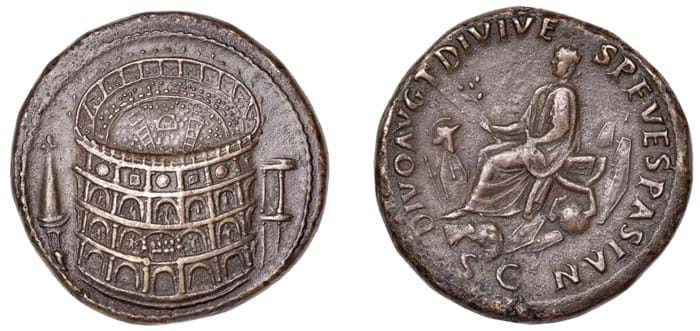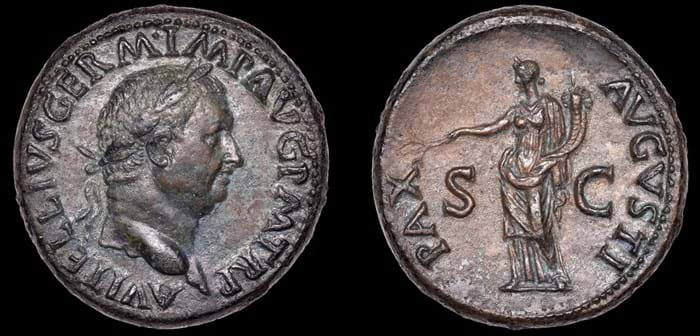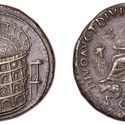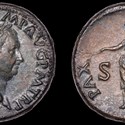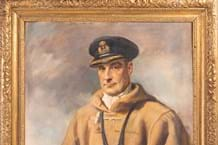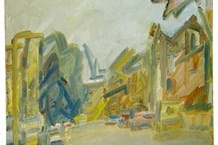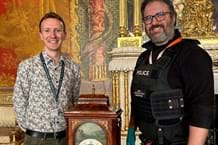In the early years of the conflict the public did indeed keep calm despite heavy bombing, and at a time when London was under attack by the Luftwaffe, auctions were among the activities that carried on.
A collection of Roman bronze coins coming up for sale at the Dix Noonan Webb saleroom on February 15 was formed by a connoisseur before and actually during the war, from 1933-41. Being sold in 194 lots and estimated to fetch up to £250,000, it is back on the market for the first time in 75 years.
Wartime auctions
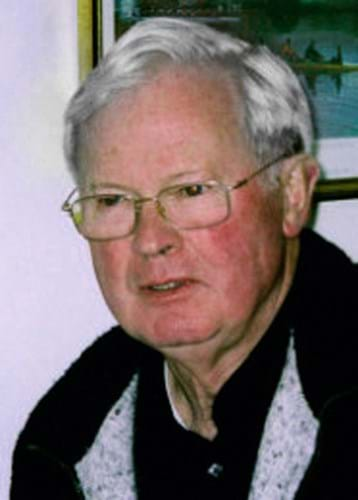
Peter Mitchell, now a DNW consultant specialising in British hammered coins, joined his family firm Baldwin’s shortly after the Second World War when memories of the coins trade’s experiences during the conflict were still fresh.
Peter Mitchell, now a DNW consultant specialising in British hammered coins, joined his family firm Baldwin’s shortly after the Second World War when memories of the coins trade’s experiences during the conflict were still fresh.
He recalls: “Baldwin’s suffered no damage but coins cabinets stacked in the window alcoves overlooking Robert Street were blown in. Dust and plaster were in evidence for a very long time.
“The British Museum received a direct hit. To get to the Coin Room one had to go out onto the roof, across the puddles on duckboards and enter through a door to gain access. Christie’s in King Street, St James’s, also received a direct hit and for some years were housed in Spencer House, St James’s Place.”
As for the wartime customers, Mitchell particularly remembers one of the many American troops who came over to the UK. The GIs may have been 'overpaid, oversexed and over here' as the popular image goes, but inevitably among the many thousands some discerning collectors emerged.
“Several American GIs became customers," said Mitchell. "A young lieutenant in the US Air Force called very late one afternoon but was told that everyone was on fire duty that night and to come back in the morning.
“On his visit the next day he selected many Roman coins which caused my Great Uncle Fred to ask whether the young man could afford all these coins, whereupon a small holdall was up-ended and bills fell out all over the table.
“He was taken to lunch at the Constitutional Club and a safe deposit was opened to house his purchases. The exercise was repeated the next two months.
“Many years later I learned that our Harvard maths graduate, Charles Hersh by name, had for three months cleaned out the Mildenhall mess in the pay-night poker game. He was thankful that his previous winnings were tucked away in a City safe deposit!”
Hersh was to become a foremost student of the Roman Republican series, editing - with Leonard Forrer - Sydenham’s 1952 Roman Republican Coinage, and of the mints of Alexander the Great. His collection is with the American Numismatic Society.
Renowned experts
Regarding the collection on offer at DNW, the anonymous connoisseur was assisted by the renowned experts Herbert Seaby and Leonard Forrer in his auction purchases.
He was a successful bidder at the London auctions of the collections of Christopher Corbally Browne and, most notably, the Rev Edward Sydenham. Among the lots are pieces from the great continental sales of the1920s and ‘30s, including the collections formed by Clarence Bement, Franz Trau, Sir Arthur Evans, Captain Edward Spencer-Churchill, Howard Levis and Paul Vautier.
The stand-out item in the collection is a Sestertius from the brief reign of Divus Titus, who was Roman emperor from 79-81AD. Only 10 specimens of this type are known, of which seven are in museums.
The posthumous coin dating from c.81-82AD depicts the recently completed Colosseum (or Coliseum). Originally known as the Flavian Amphitheatre, this was commisioned in 72AD by Emperor Vespasian and completed by Titus, his son, in 80AD, with later improvements by Domitian. More than 9000 wild animals were killed at the inaugural games.
The coin, which the collector bought in February 1939, is estimated at £60,000-80,000.
Other highlights include a Sestertius from the brief reign of Vitellius, who was emperor for eight months in 69AD. This coin, celebrating the end of the civil war of 68-69AD, was part of several famous collections in the early part of the 20th century but was last on the market in May 1940 - during the war. It is estimated at £4000-6000.


